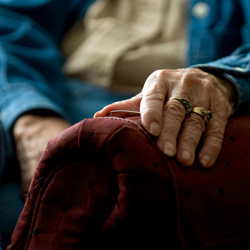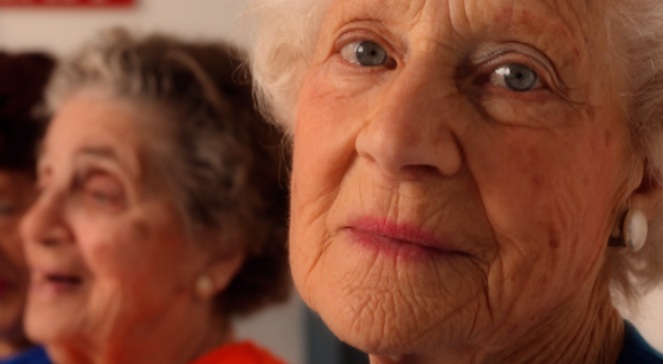By CCHR International
The Mental Health Watchdog
January 3, 2017
A recent study claims that electroshock therapy (ECT) is “beneficial” to the elderly. However, the mental health watchdog, Citizens Commission on Human Rights (CCHR), says the study is yet another push from psychiatry to increase the use of electroshock—up to 460 volts of electricity sent through the brain—in vulnerable and frail elderly.
The study on a Novel Strategy for Continuation ECT in Geriatric Depression (Phase 2), flies in the face of reports indicating a potential high death rate for elderly patients who receive electroshock. The Food and Drug Administration also reports that potentially significant adverse events associated with ECT include “cardiac ischemia [insufficient blood supply and oxygen to the heart], cardiac arrhythmias [abnormal heart rhythm], prolonged apnea [breathing stops and starts] and even death.”[1]
CCHR is conducting an investigation into the use of ECT in the U.S. which it says should be banned. The group questions the study published in The American Journal of Psychiatry that claims ECT “was beneficial in sustaining mood improvement” for most elderly patients. CCHR says that the researchers have conflicts of interests, including two of the psychiatrists having past financial ties to electroshock device manufacturers.[2]
CCHR wants autopsies with concurrent studies conducted on elderly who die after undergoing ECT to determine what effects it may have had on their hearts. In a 1993 Brown University study of patients 80 and older, 27 percent of shock patients were dead within one year compared to 4 percent of a similar group not treated with ECT. In two years, 46 percent of shocked patients were dead vs. 10 percent who had not received ECT.[3]
Kenneth Castleman, Ph.D., a biological engineer who has studied the ECT device warns: “To say that your brain needs a 460-volt electric shock is like saying your computer needs a lightning strike.”
Yet, between 2012 and 2014, Medicare, which primarily services those aged over 65, paid $29.6 million to physicians (not including anesthesiologists that render the patient unconscious before treatment) for administering and monitoring ECT. More than 125,500 ECT treatments were delivered in 2014.[4]
-

The APA sets the chance of elderly ECT patients dying at 1 in 10,000. But the death rate is closer to 1 in 200 among the elderly, according to mortality studies done over a 20 year period and death reports from Texas, the only state that keeps close track.
A psychiatrist writing in Ethical Human Psychology and Psychiatry said that “ECT is especially devastating to the vulnerable brain and body of the elderly….As would be predicted based on the fragility of the older brain, ECT causes more severe brain dysfunction in the elderly.”[5] He was also quoted in a New York Times article saying that ECT has been on the increase because “there’s a market that’s been exploited” with elderly women on Medicare.[6]
- According to the New York Times, the elderly are given electroshock when they take “so many other drugs that they cannot safely add a powerful psychiatric drug.” A psychiatrist spelled out another reason for electroshocking the elderly: It’s “a big money-maker,” he said.[6]
- Dr. Castleman recently wrote “ECT Basics” to dispel the myth that ECT is safe. He said that “almost none of the research focuses specifically on damage to the brain cells themselves” and contemporary modifications to the ECT device and how it is administered have done nothing to reduce the damage ECT causes.
- The death rate for elderly patients who receive shock is 50 times higher than patients are told on the American Psychiatric Association’s model consent form. The APA sets the chance of dying at 1 in 10,000. But the death rate is closer to 1 in 200 among the elderly, according to mortality studies done over a 20 year period and death reports from Texas, the only state that keeps close track.[7]
The ECT researchers claimed that “improvement” was greater where ECT was combined with lithium (mood stabilizer) and venlafaxine (an antidepressant), drugs that can have potentially life-threatening side effects. And as people age, adverse drug reactions increase dramatically in frequency and severity.[8]
Therefore, psychiatrists on the one hand say ECT is needed for the elderly to avoid their being put at risk of the damaging effects of antidepressants, but on the other hand purport that for ECT to be “effective,” patients should be maintained on the very drugs ECT is supposed to protect them from and in actuality, also put them at risk of death.
The end result, CCHR says, is that rather than being cherished and respected, senior citizens subjected to psychiatric treatments are put at risk of a tragic, premature end. CCHR urges anyone who has an elderly family member or friend who has been damaged by electroshock to report this to CCHR’s online Abuse Case hotline here.
References:
[1] “FDA Executive Summary Prepared for the January 27-28, 2011 meeting of the Neurological Devices Panel Meeting to Discuss the Classification of Electroconvulsive Therapy Devices (ECT),” p.6.
[2] Charles H. Kellner, et al., “A Novel Strategy for Continuation ECT in Geriatric Depression: Phase 2 of the PRIDE Study,” Am J Psychiatry, 1 Nov 2016, https://www.ncbi.nlm.nih.gov/pubmed/27418381; Linda Andre, Doctors of Deception: What They Don’t Want You to Know about Shock Treatment, (Rutgers University Press, 2009) p. 101 and pp 198-199; “ECT Experts’ Ties to Shock Machine Industry,” http://www.ect.org/news/posta.html; Electroconvulsive Therapy, ECT Task Force report, (APA) Sept. 1978, pp. iii; Program, American Psychiatric Association 2005 Annual Meeting, Atlanta, GA, May 2005, http://journals.lww.com/ectjournal/Citation/1990/06000/The_1978_and_1990_
APA_Task_Force_Reports_.2.aspx; Mehul Mankad, MD, et al., “Clinical Manual of Electroconvulsive Therapy,” American Psychiatric Publishing, Inc., 2010, http://psychoreanimatology.org/download/books/Clinical_
Manual_of_Electroconvulsive_Therapy_2010.pdf.
[3] “Patients often aren’t informed of full danger,” USA Today, http://usatoday30.usatoday.com/life/health/lhs195.htm.
[4] Medicare Provider Utilization and Payment Data: Physician and Other Supplier, Centers for Medicare and Medicaid Services, CY 2012 through CY 2014, https://www.cms.gov/research-statistics-data-and-systems/statistics-trends-and-reports/medicare-provider-charge-data/physician-and-other-supplier.html.
[5] “The FDA Should Test the Safety of ECT Machines,” Ethical Human Psychology and Psychiatry, Volume 12, Number 2, 2010; http://www.ingentaconnect.com/content/springer/ehpp/2010/00000012/
00000002/art00007?crawler=true
[6] Duff Wilson, “F.D.A. Is Studying the Risk of Electroshock Devices,” The New York Times, 23 Jan. 2011, http://www.nytimes.com/2011/01/24/business/24shock.html.
[7] “Patients often aren’t informed of full danger,” USA Today, http://usatoday30.usatoday.com/life/health/lhs195.htm.
[8] B.G. Pollack, “Adverse reactions of antidepressants in elderly patients,” J Clin Psychiatry. 1999;60 Suppl 20:4-8, https://www.ncbi.nlm.nih.gov/pubmed/10513851.



SHARE YOUR STORY/COMMENT